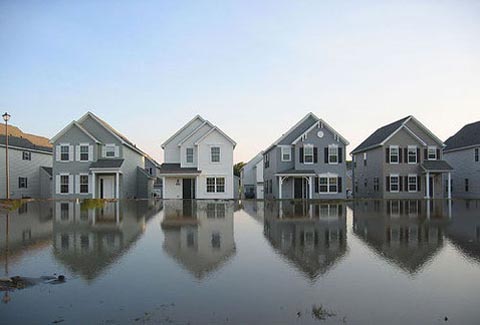What with US property prices falling all over the country and homeowners seeing literally thousands of dollars wiped off their greatest asset, haven’t you ever wondered why no one tries to hedge against this kind of risk?
Just last week, Zillow reported that US property prices in the US fell again for the 57th straight month. Some properties are barely worth more than half what their owners originally paid for them in the boom days pre-2006.
While everyone knows they need to take out insurance against storm damage, fires and burglary, why is it that no one seems to care about insuring a home’s value?
Homes that are officially “underwater”, with values less than that of the mortgage outstanding, would be the most obvious beneficiaries of such protection. Once this happens to a homeowner, their job mobility becomes stifled as they are less likely to want to move.
They could rent somewhere of course, but then the American dream has always been to finally pay off that mortgage and have a nice nest egg with which to fund your retirement. It’s this that makes a fall in property values especially worthwhile in protecting against.
Sadly, the market for this type of protection is almost non-existent. “Homeowners know they are taking a huge risk,” says Professor Robert Shiller, an economist at Yale University. “It puzzles me why people don’t hedge against this risk.”
One of the major reasons of course, is that there are few products available which are suited to it. The big insurance companies have never tried to market this kind of protection. The reason being it would simply be too expensive. Just a 10% drop in US property values could result in $1 trillion worth of losses.

Underwater homes desperatley need protection against eroding property values. Courtesy of Smart On Money
Despite this, a few financial players have attempted to come up with such protection, but they are having a tough time making inroads.
Home Headquarters is one such organization, which offers home value decline insurance to homeowners in Syracuse, NY. Their 30-year policies cost just 1.5% of the home’s protected value, yet they haven’t had a single enquiry in over a year. According to director Kerry Quaglia, they have only sold 150 of these protection plans since they initiated the program back in 2003.
Other companies face problems too. One of them is ValueGuard Financial, who have 750 waiting customers they cannot serve because regulators won’t approve their product.
Another company, Home Value Protection, entered the home value protection market in 2009, only to leave it again within 12 months. It has now repackaged its product as a standard insurance policy and will attempt to launch itself again later this year.
One veteran insurance executive, Joe Melendez, has formed a new company named Property Value Insurance. He hopes to enter the market next spring, underwriting insurance against property values falling.
Melendez estimates that his policy would cost around 1.5% of the home’s sale price, but he complained bitterly about the “monumental task” of getting the necessary regulators to approve his product, a process which took two years.
As history shows us, says Prof. Shiller, “Good ideas often take a long time to gain acceptance.”
This is one idea that has already been a long time coming.
Any prperty value insurance co in INDIA